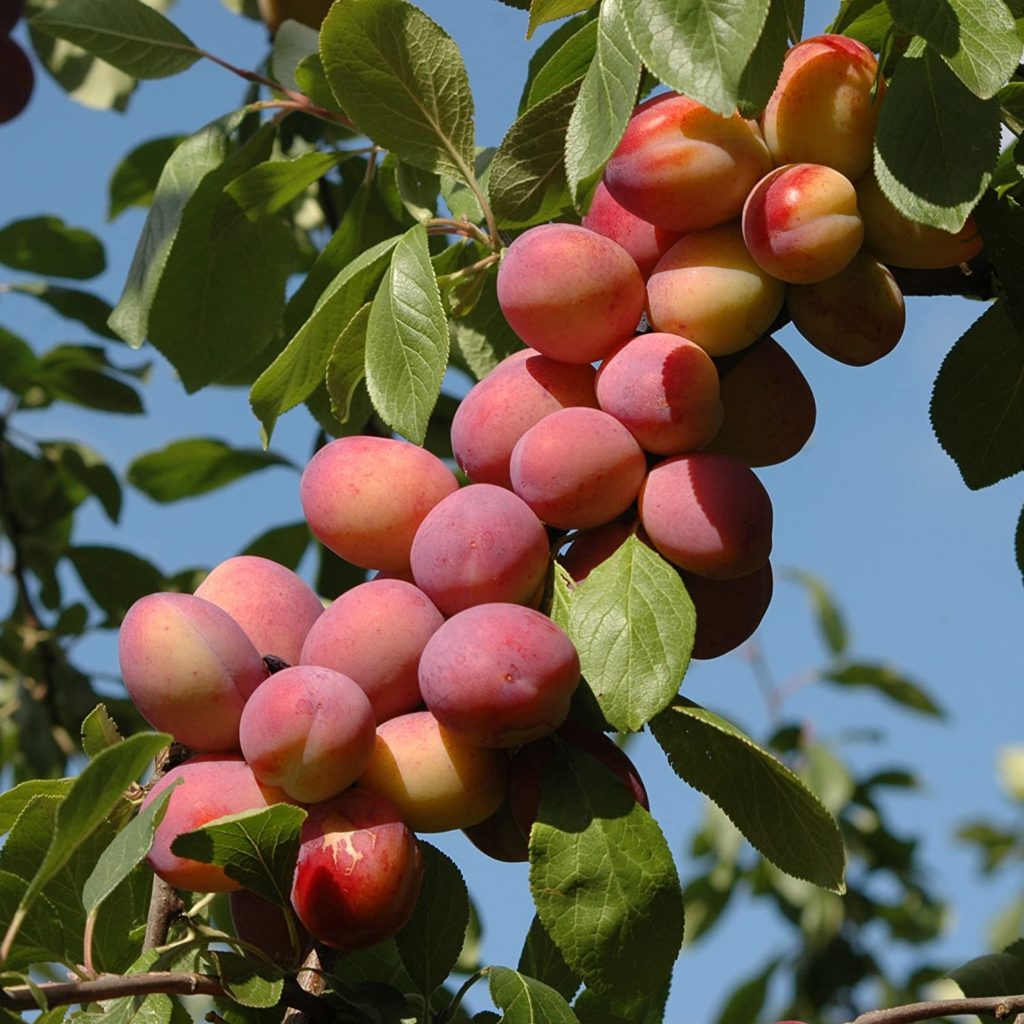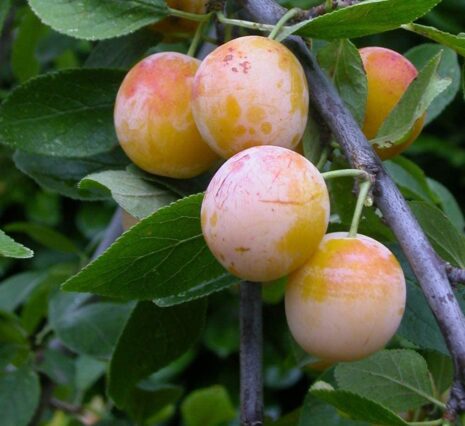Growing your own plum tree will give you a decent yield of sweet, juicy plums to enjoy in the late summertime.
There are lots of plum varieties available, from sweet eaters to the more sour, cooking plums.

Plum Tree Pollination
Not all plum trees are self-fertile, so if you have a tree that relies on neighbouring trees to pollinate, it is worthwhile planting two that flower at the same time. If you do not have the space for more than one tree, there is a good choice of self-pollinating plum trees available.
Plum Tree Rootstocks
Rootstock are when one plum tree, the stock, is grafted onto a different plum tree’s roots, the scion. The reason for doing this is if non-rootstock plum trees were planted, they would grow too large for most gardens. Plum tree rootstocks determine how big the tree will grow.
The size of the fully grown tree should be on the label when you buy. Choose a rootstock that is suitable for the size of your garden. If space isn’t a problem, you can go for the St Julien A plum rootstock, which produces a tree that can be 3.5 metres tall. For smaller gardens, a Pixy plum rootstock will grow a tree to around 2.5 meters tall.
Planting Plum Trees
Plum trees need a warm, sunny position to thrive, and like to have roots in moist, but well drained, soil.
Plum trees come either bare-rooted or in containers, and the best time of year to plant them is in October to February, when they are dormant.
First, prepare the ground some weeks before you plant, by digging plenty of well-rotted manure or compost into the soil. This helps the tree to get a good start as the roots will have lots of fertile soil to grow in.
Once the ground is prepared, dig a hole that is wide enough for the roots to spread out. Plant the plum tree into the hole and fill with soil, making sure that the place where the graft is about 5cm above the soil. Firm down well and give it a good water.
Push a tree stake into the soil and tie the tree to it, leaving enough room for the trunk to grow. This will support the plum tree as it establishes itself.
Training a Plum Tree
Plum trees can be trained to grow in a variety of shapes, such as bush, pyramid, fan or standard. If you want a particular shape, then make sure you choose a rootstock that is suitable for the size.
Bush shaped plum trees have a clear trunk of around 3ft. The branches are then pruned to form an open shaped tree.
Pyramid shaped plum trees are smaller than trees that are pruned to a bush shape.
Fan shaped plum tree is when the branches are trained to grow laterally, either supported against a wall or on wires.
Standard plum trees have no low branches, and forms a normal tree shape.
Caring for Plum Trees
There are a few jobs to do each year to keep you plum tree in good condition. Stems, or sucker, may grow up from the base, and these should be removed so that the tree uses more of its energy to grow upwards and bear fruit.
In springtime, you should apply a mulch around the base to help the soil retain moisture, and a handful of organic fertiliser to encourage healthy growth. Prune out any old wood during early spring.
A good plum tree is a joy for any gardener, cook or home farmer that enjoys eating this versatile, juicy fruit. The culinary options are endless, or just eat them straight from the tree!
Want to grow more food at home? Here’s the A-Z Growing Guide for fruits and vegetables.



